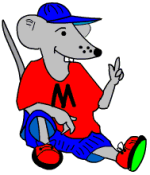 The first of these maths worksheets looks briefly at Imperial measurements of length, mass and capacity. These terms are still widely used by older people in the UK but all schools predominately use metric in the classroom.
The first of these maths worksheets looks briefly at Imperial measurements of length, mass and capacity. These terms are still widely used by older people in the UK but all schools predominately use metric in the classroom.
The second maths worksheet looks at accurately measuring lines to the nearest cm. These pages have been produced using A4 pdf and there may be a slight discrepancy when you print – try to make sure that you do not have ‘fit to page’ on as a printing option.
 By rapid addition we mean almost instant – as quickly as answering your name. If this is to happen children need to meet quick calculations on a daily basis. They will enjoy the challenge and the success that they meet as their replies get quicker and quicker. The two worksheets below are just initial starters – most of this kind of work can be done instantly without paperwork. Set a target number, usually a whole ten below 100. Call out a number below your target and the task is to find the number to make the target. Easy!
By rapid addition we mean almost instant – as quickly as answering your name. If this is to happen children need to meet quick calculations on a daily basis. They will enjoy the challenge and the success that they meet as their replies get quicker and quicker. The two worksheets below are just initial starters – most of this kind of work can be done instantly without paperwork. Set a target number, usually a whole ten below 100. Call out a number below your target and the task is to find the number to make the target. Easy! Congruent is a word to conjure with! In fact it has a very simple meaning. If two shapes are congruent then they are identical in every way, including size. Simple eh! Unfortunately people who design maths tests papers make this as difficult as possible as children are expected to be able to spot congruent shapes even when one of a pair has been turned. By far the easiest way to spot two congruent shapes is to cut one out, or trace it and see if it fits exactly over the other – if it does it is congruent.
Congruent is a word to conjure with! In fact it has a very simple meaning. If two shapes are congruent then they are identical in every way, including size. Simple eh! Unfortunately people who design maths tests papers make this as difficult as possible as children are expected to be able to spot congruent shapes even when one of a pair has been turned. By far the easiest way to spot two congruent shapes is to cut one out, or trace it and see if it fits exactly over the other – if it does it is congruent.